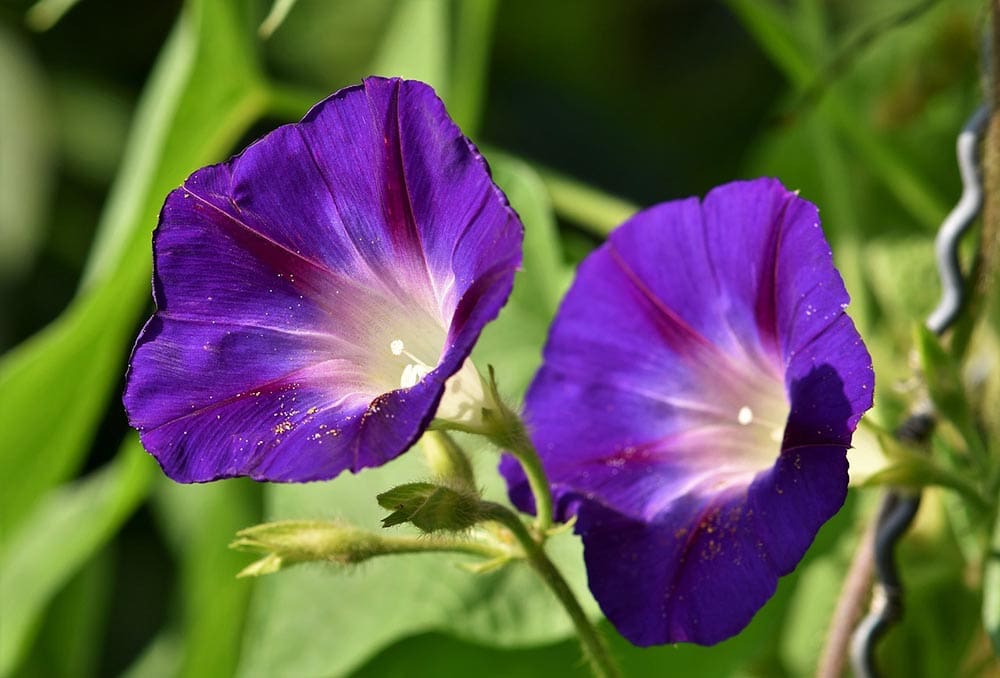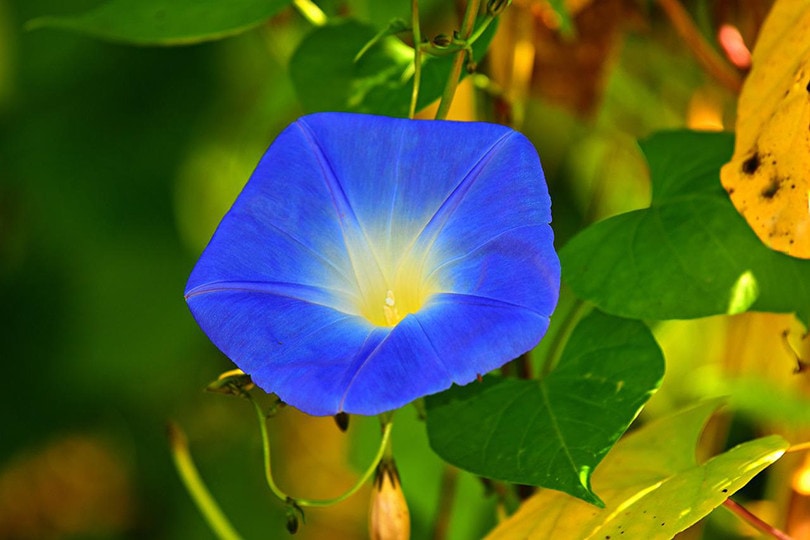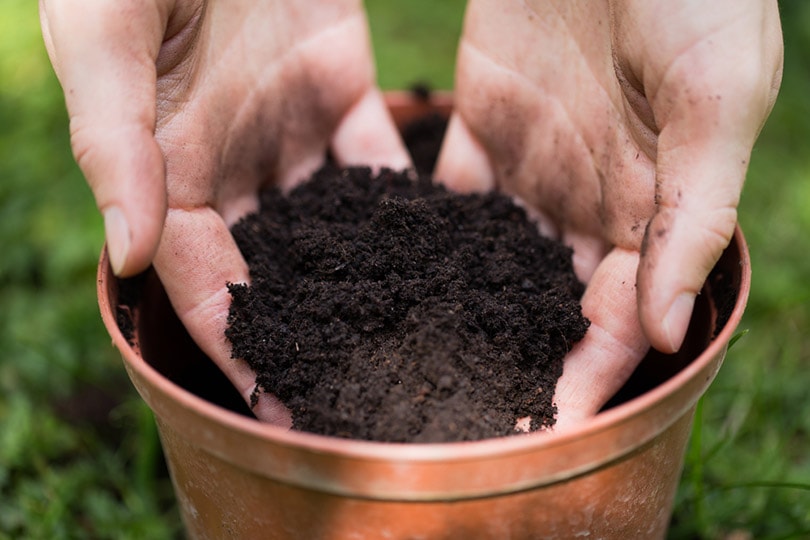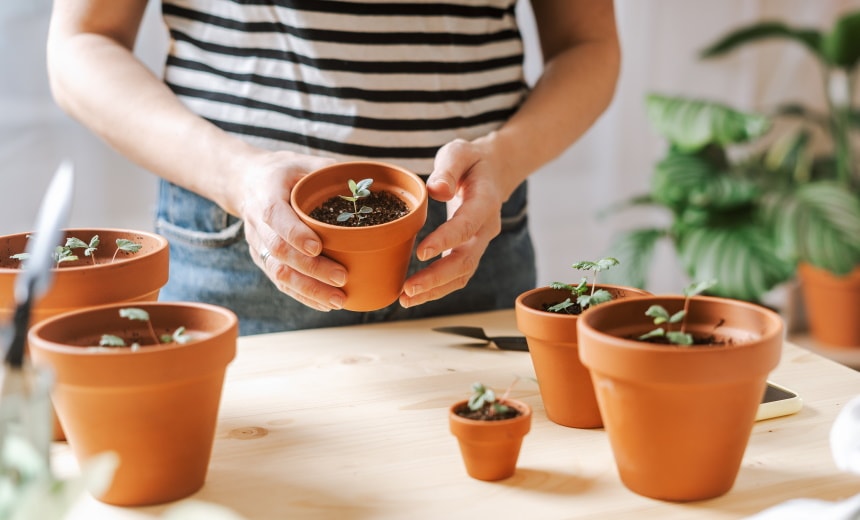Can You Grow Morning Glories Indoors? Tips, Tricks & How-To Guide
-
Karlen Prendiville
- Last updated:

Ipomoea purpurea, more commonly known as Morning glories, open each morning and close in the afternoon throughout summer until the first frost of autumn. As popular plants with colorful, trumpet-shaped blossoms (most commonly shades of pink, blue, and lavender), Morning glories are an annual plant that is best planted in the spring to follow its natural plant cycle.
Originating from Mexico, Morning glories have a delicate fragrance characterized by hints of jasmine, rose, geranium, violet, orchid, orange, sandalwood, and oakmoss. With the potential to grow to 6 to 10 feet in height, the fast-growing vines are aggressive and can dominate a garden if not properly tended.
When grown outdoors, Morning glories can often be seen growing vertically up fences, mailboxes, and lamp posts. Morning glories can be grown indoors and are much easier to contain when grown in pots or containers. In fact, many gardeners pot their Morning glories indoors initially, so they can control the wild vines before transferring them outside.

Before You Begin

Where to Place Your Plant
It is important to strategically place your Morning glories in an area of your home exposed to approximately 6 to 8 hours of sunlight per day, ideally close to a large window. Morning glories also plant beautifully in hanging pots or baskets, which allow their vines to trail over the side.
Make sure that your plant has something to vine around to stay contained, such as a pot or planter with a trellis built-in, which will be required around the 2 or 3-week growth mark. While many indoor plants grow well with filtered or indirect light, Morning glories require bright and direct light from the sun. If this isn’t possible for the full 6 to 8 hours each day, a grow light is another option.
Please note: Morning glory seeds are poisonous, so keep them out of reach of pets and small children.
The How-To Guide for Planting Morning Glories Indoors
1. Soil
The soil used to grow your Morning glories should be a light potting soil that drains well. To ensure that your drainage holes do not get blocked, it is helpful to place some gravel on the bottom of the container. Feeding your flowers every few weeks with a balanced organic fertilizer throughout the growing season will also help to encourage blooming.

2. Pots
Pots used for planting your Morning glories should be at least 8 to 10 inches in diameter, 6 inches deep, and include holes at the bottom for proper drainage. Any water that collects at the bottom of the pot basin should be discarded as these plants do not like to be surrounded by water. Plant no more than two to three plants per pot.
3. Planting Your Morning Glories
Morning glory seeds can be purchased at any garden center. They have hard seed exteriors and should be soaked in water overnight before planting. Plant approximately five seeds directly into each of your pots, about half an inch deep. When your seeds begin to grow, and the leaves unfold, trim down and thin out your pots to leave the two or three strongest.

4. Upkeep
Caring for Morning glories once they are established is quite easy and does not require much attention. Once planted, your plants should be watered two times per week (more in dry weather) to keep the soil moist.
During initial growth, indoor Morning glories should be watered using a fine mist to keep the soil moist but not overwatered or soggy. Once your plants are well established, water thoroughly at the soil level. Wait for the soil to dry out before watering again.
Trim back dead flower heads and stems that sprout in order to keep your vines from growing out of control.
Popular Container Morning Glory Varieties
| Heavenly Blue: | Rich blue flower, approximately 12 feet |
| Scarlett O’Hara: | Bright red flower, approximately 15 feet |
| Star of Yelta: | Rich purple, approximately 10 feet |
| Mt Fuji: | Mixed color variety that blooms in a striped pattern. |
Diseases and Environmental Problems
A sure sign to know if there is something wrong with your Morning glory plant is the presence of yellow leaves. This can result from insufficient sunlight and can be remedied by moving the pot to a sunnier spot. Yellow leaves are also caused by under or overwatering.
A fungal disease called rust is another cause of yellowing leaves. To determine if rust is the cause, take a close look at the backside of the leaves for powdery pustules. If this is present, remove any affected leaves. A disease called canker will cause the stem of your morning glories to become brown and wilted.
It begins at the end of the leaves and spreads to the stem. If neglected, it will eventually affect the entire plant, so infected areas should be trimmed immediately.
Preparing Your Morning Glories for the Winter Months
When late fall arrives, cut back your Morning glory plants to about 6 inches tall and reduce watering. This will protect your plant from dying under the weight of the growing vines. Make sure to water modestly throughout the winter. The growth of the vine will resume once the spring comes back around and as you begin to increase watering.
Featured Image Credit: Ralphs_Fotos, Pixabay
Contents
